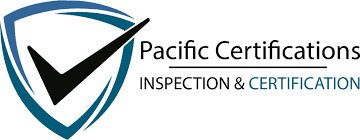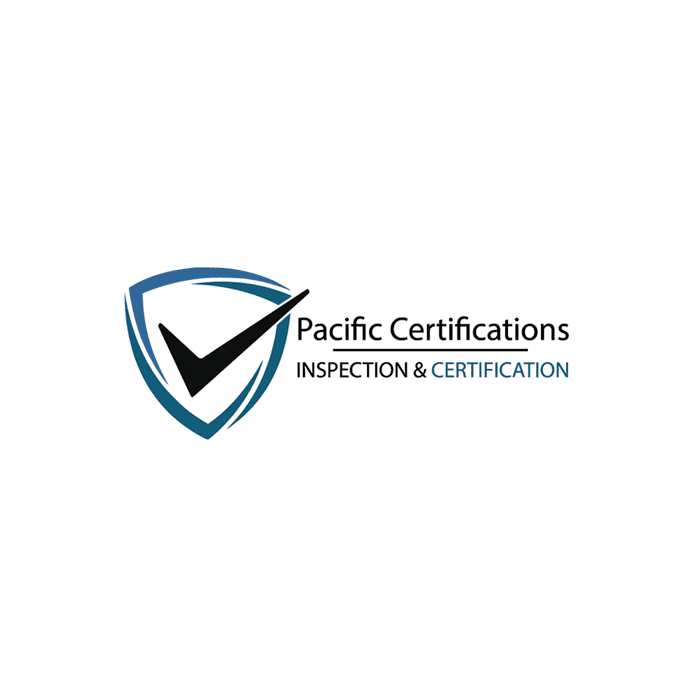ISO 31000 & ISO 37001: Managing Risk and Anti-Bribery Compliance
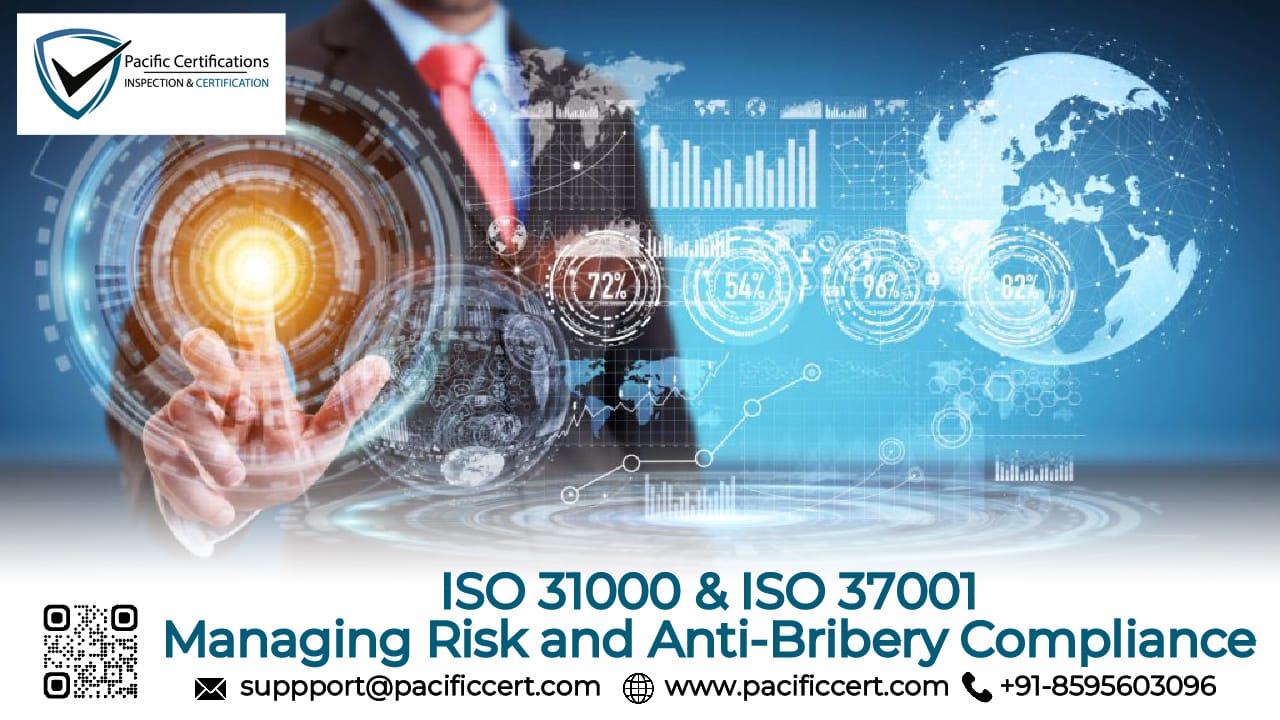
Introduction
In today’s increasingly complex global environment, organizations face a wide range of risks—from operational hazards to ethical challenges like bribery and corruption. Managing these risks efficiently and transparently is crucial for long-term sustainability and success.
Two critical international standards support organizations in this endeavor: ISO 31000 for risk management and ISO 37001 for anti-bribery management systems. These frameworks help businesses of all sizes strengthen governance, build resilience, and increase stakeholder trust.
ISO 31000 Risk Management Framework
ISO 31000 is the international benchmark for risk management, this standard offers principles, guidelines, and a structured approach to identifying, assessing, and managing risk across all types of organizations.

Core Elements of ISO 31000 Framework:
- Principles: Risk management should create and protect value, be an integral part of all processes, and be tailored to the organization.
- Framework: Leadership and commitment drive the integration of risk management into governance, strategy, and decision-making.
- Process: It includes risk identification, risk analysis, risk evaluation, and risk treatment.
Rather than being prescriptive, ISO 31000 is adaptable to each organization’s unique context, making it highly relevant for industries ranging from healthcare to finance and manufacturing.
Ensure your organization is resilient and ethically sound—Get ISO 31000 and ISO 37001 certified with Pacific Certifications. Contact us today at [email protected].
Why Organizations Adopt ISO 31000?
- Enhance decision-making
- Improve operational efficiency and governance
- Increase resilience to uncertainty
- Support compliance and regulatory obligations
- Strengthen reputation management
Implementing ISO 31000 enables a proactive rather than reactive approach, encouraging organizations to anticipate risks rather than simply respond to them.
ISO 31000:2018 Training in the USA
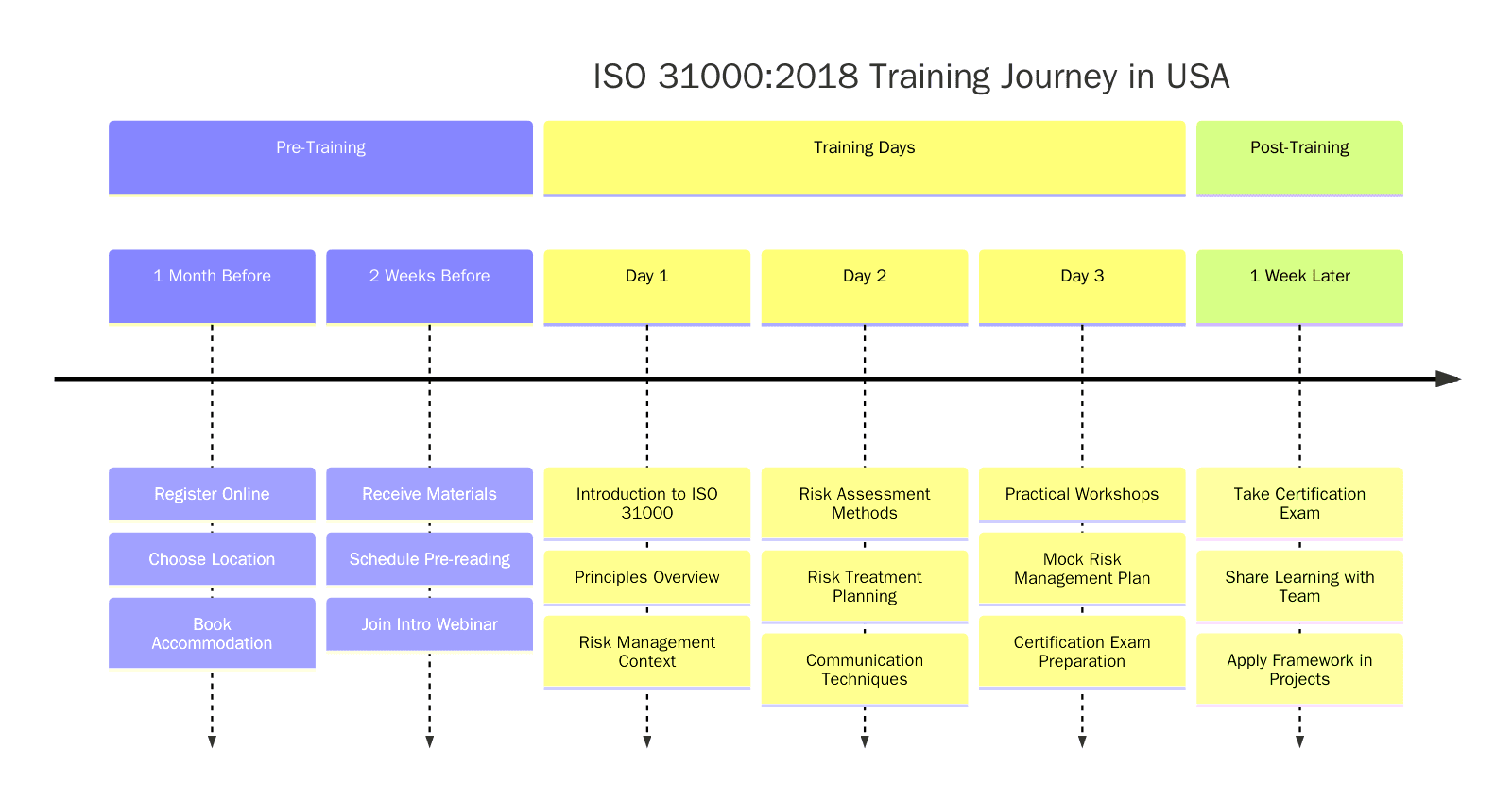
For professionals seeking to enhance their expertise in enterprise risk management, ISO 31000:2018 training provides a valuable credential. In the USA, there are numerous training options available, ranging from in-person workshops to fully online courses.
Typical ISO 31000 Training Curriculum Includes:
- Understanding the core principles and terminology
- Designing and implementing a risk management framework
- Risk identification, analysis, and treatment methods
- Embedding risk management into strategic decision-making
Training Providers:
- Professional associations such as RIMS (Risk and Insurance Management Society)
- Accredited certification bodies offering ISO 31000 Lead Risk Manager courses
- Universities and executive education programs specializing in corporate governance and risk management
Who Should Attend:
- Risk managers
- Compliance officers
- Auditors
- Project managers
- Senior executives
Completing ISO 31000 training not only boosts personal credentials but also contributes to strengthening an organization’s overall risk management capability.
What Is Risk-Based Thinking in ISO Standards?
Risk-based thinking is a foundational concept across modern ISO management system standards, including ISO 9001 (Quality Management), ISO 45001 (Occupational Health and Safety), and ISO 27001 (Information Security).
Rather than treating risk as a separate process, ISO standards encourage embedding risk-awareness into everyday operations and decision-making.
Key Aspects of Risk-Based Thinking:
- Anticipating and mitigating potential issues before they arise.
- Recognizing that risks and opportunities change over time, requiring ongoing evaluation.
- Building a mindset where all employees are aware of how their actions can influence risk.
For example, ISO 9001:2015 shifted from preventive action to risk-based thinking throughout the quality management system, ensuring quality is designed into processes rather than checked afterward.
Similarly, ISO 45001 incorporates risk-based thinking to proactively manage workplace health and safety risks, rather than responding reactively to incidents.
In short, risk-based thinking empowers organizations to act smarter, faster, and more strategically in today’s dynamic environment.
Partner with Pacific Certifications for a seamless audit and certification process. Reach us at [email protected].
Best Certifications for ERM Professionals
Enterprise Risk Management (ERM) is a rapidly growing field, and several globally recognized certifications can enhance professional credibility and career opportunities:
ISO 31000 Certified Risk Manager
Focuses on practical application of ISO 31000 principles and processes.
Certified Risk Management Professional (CRMP) by RIMS
Recognizes risk management professionals who can design and implement ERM frameworks.
Certified Risk Manager (CRM)
Offered by The National Alliance for Insurance Education & Research, focuses on specific industries like insurance and finance.
FERMA RIMAP Certification
European certification for risk managers, emphasizing practical and ethical risk management.
Certified in Risk and Information Systems Control (CRISC)
Ideal for professionals focused on IT risk management and enterprise governance.
Choosing the Right Certification:
ISO 31000 certifications are especially relevant for professionals working with ISO management systems or integrated management approaches.
- CRMP and CRM certifications are ideal for those seeking enterprise-wide risk management expertise.
- CRISC suits those in tech-driven roles where IT risk is prominent.
ISO 37001: Why Anti-Bribery Certification Is Gaining Importance

ISO 37001, the Anti-Bribery Management System (ABMS) standard, was published in 2016 to help organizations prevent, detect, and address bribery.
Why ISO 37001 Is Becoming Essential:
- Increasing Regulatory Scrutiny: Governments worldwide are tightening anti-bribery laws (e.g., U.S. FCPA, UK Bribery Act).
- Stakeholder Expectations: Investors, partners, and customers demand ethical business practices.
- Global Expansion: Operating in multiple jurisdictions exposes organizations to diverse corruption risks.
- Reputation Management: Anti-bribery compliance strengthens brand reputation and customer trust.
Key Features of ISO 37001:
- Implementation of an anti-bribery policy
- Appointment of a compliance manager
- Risk assessments specific to bribery
- Due diligence on projects and business associates
- Financial and non-financial controls
- Reporting, monitoring, and investigation procedures
Organizations certified to ISO 37001 demonstrate a serious commitment to ethical business practices and corporate governance, which can be a key differentiator in competitive markets.
Achieve ISO 31000 and ISO 37001 certifications with expert support from Pacific Certifications. Email us at [email protected]for more details!
Risk Management in ISO 9001 and 45001
Risk management is deeply embedded in ISO 9001 (Quality Management) and ISO 45001 (Occupational Health and Safety).

ISO 9001:2015 and Risk:
- Emphasizes identifying risks that could affect product or service quality.
- Requires organizations to plan actions to address these risks and evaluate the effectiveness of those actions.
ISO 45001:2018 and Risk:
- Focuses on risks that could cause workplace accidents, injuries, or illnesses.
- Encourages organizations to proactively eliminate or control hazards.
Benefits of Integrating Risk Management into ISO 9001 and 45001:
- Improved product/service consistency
- Reduced operational disruptions
- Enhanced employee health and well-being
- Stronger compliance with legal and regulatory requirements
- Increased customer satisfaction
Both standards advocate a "Plan-Do-Check-Act" (PDCA) approach where risk management is an ongoing, iterative cycle—not a one-time activity.
RIMS-Certified Risk Professional vs ISO Certifications
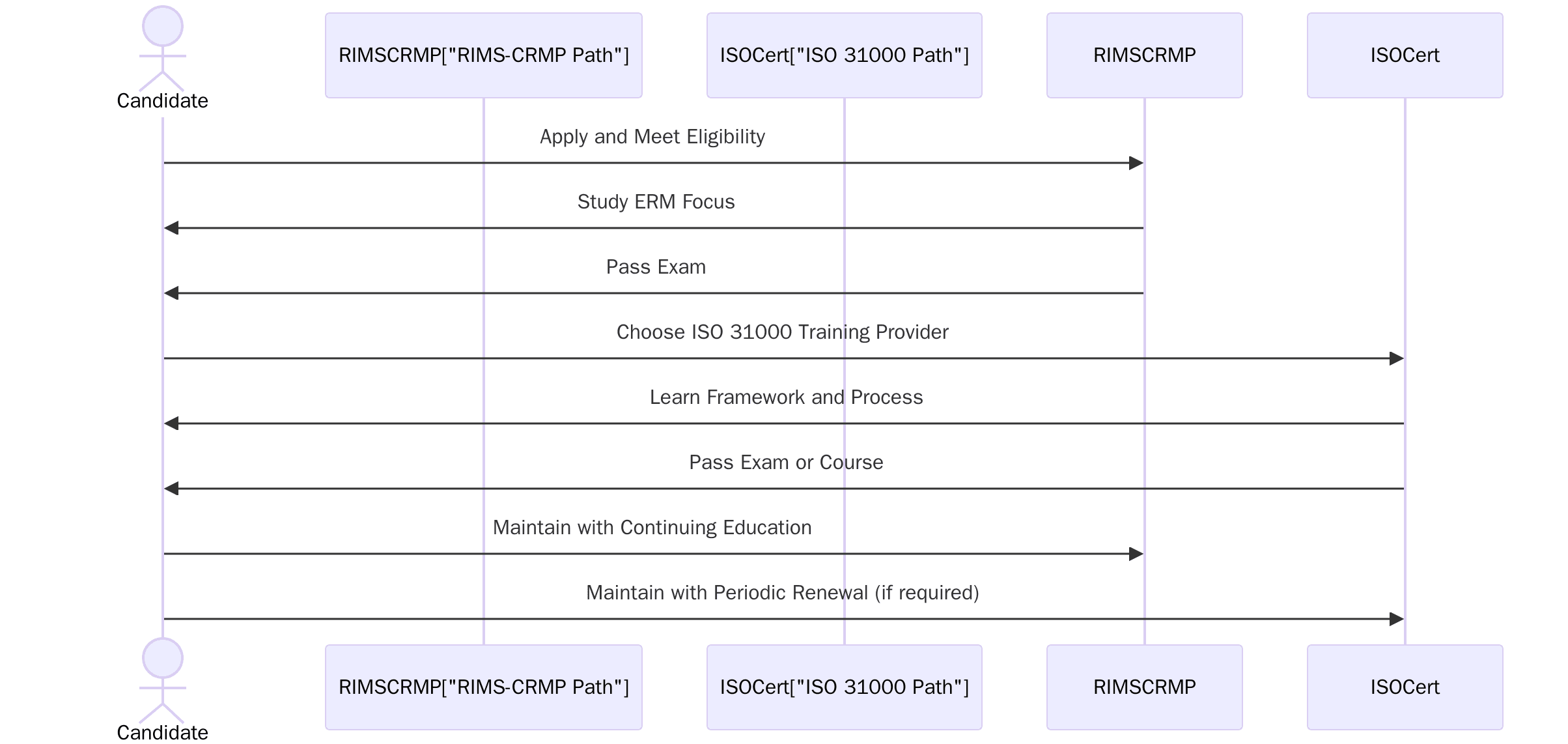
When considering career advancement in risk management, professionals often compare certifications like the RIMS-Certified Risk Management Professional (RIMS-CRMP) and ISO certifications like ISO 31000 Certified Risk Manager.
RIMS-CRMP:
- Focuses heavily on strategic and enterprise risk management.
- Recognized mainly in North America but growing internationally.
- Emphasizes leadership skills, communication, and alignment of risk management with business objectives.
ISO 31000 Certifications:
- Globally recognized across industries.
- Technical and process-oriented, focusing on implementing and managing risk frameworks based on ISO principles.
- Highly applicable for professionals involved in ISO management systems or integrated audits.
Which to Choose?
- Choose RIMS-CRMP if your focus is on executive-level ERM strategy and leadership.
- Choose ISO 31000 certifications if you need technical expertise in setting up, implementing, and maintaining risk frameworks, especially in an ISO-compliant organization.
Risk and ethical compliance are integral to sustainable, successful businesses. ISO 31000 offers a robust, flexible framework for managing risk across all areas of an organization, while ISO 37001 ensures that anti-bribery controls are systematically and effectively implemented.
Organizations that proactively embrace these standards not only strengthen their operations but also earn the trust of customers, regulators, investors, and employees.
Whether you are an executive looking to safeguard your business or a professional aiming to advance your career, understanding and implementing these standards will be a key asset in navigating the complexities of today's global marketplace.
Need Help with ISO 31000 or ISO 37001 Certification?
Pacific Certifications can assist you with the audit and certification of your risk management and anti-bribery management systems. Our experienced auditors ensure a smooth certification process tailored to your organization’s needs.
For more information, contact us at [email protected]or visit www.pacificcert.com.
Ready to get ISO certified?
Contact Pacific Certifications to begin your certification journey today!
Suggested Certifications –
Read More: Pacific Blogs
